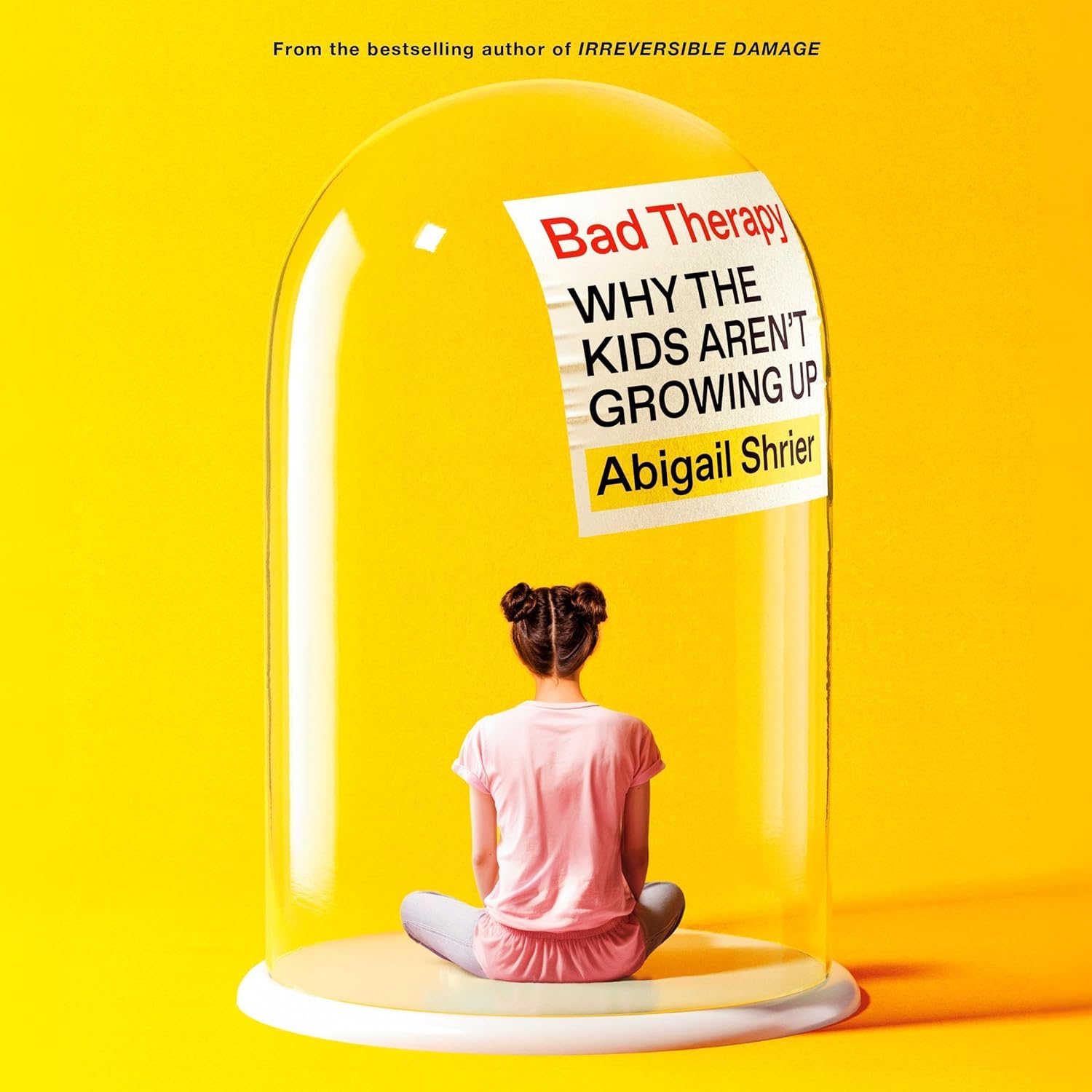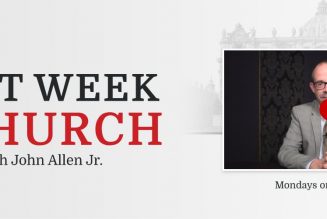
This spring saw the publication of two books arguing forcefully that our children are struggling and the adults are to blame. One of the books met with nodding heads all around and generated real enthusiasm for curbing the pernicious effects of technology on adolescent mental health. The other, Abigail Shrier’s Bad Therapy: Why the Kids Aren’t Growing Up, met with a much chillier reception, but it confronts parents and teachers of adolescents with questions that are both challenging and important. To understand the controversy regarding Bad Therapy, it is helpful to consider it as the second part of a one-two punch to parents and educators.
Contexts and Comparisons
In The Anxious Generation: How the Great Rewiring of Childhood Is Causing an Epidemic of Mental Illness, also published last spring, social psychologist Jonathan Haidt marshalled mountains of evidence to argue that smartphones, social networks, and overprotective parenting are responsible for a huge increase in anxiety, depression, and suicide among teens and young adults. (Heights mom Sarah Weeldreyer has warmly reviewed Haidt’s book here for Washington Monthly, and our own Rich Moss interviewed Dr. Kevin Majeres about both Haidt’s book and Shrier’s here.) Haidt is a very accomplished academic and a great writer to boot, and he makes a compelling case based on robust statistical evidence of the kind academics typically collect, interpret, and accept as authoritative. These strengths may explain why Haidt’s book has been so well received, and why it is making converts among formerly tech-heavy families. Haidt’s book has generated fresh parental attention to the rules and customs regarding smartphones and other connected devices, and in many school systems the parents are demanding a more restrictive approach from the schools. There seems now to be a broad and widening consensus that the evils Haidt identifies are real and that a dramatic reversal of what Haidt calls “the Great Rewiring of Childhood” is in order.
Shrier’s Bad Therapy identifies many of the same trouble signs among adolescents and young adults that Haidt discusses, and Shrier joins Haidt in arguing that parental overprotectiveness has harmed the generation now reaching maturity. But in addition, says Shrier, we have made matters worse by “medicalizing” misbehaviors. Instead of telling kids to “stop it” when they veer off-course, as our parents or grandparents might have, we tend to classify the same thoughts and actions as symptoms of some treatable condition. As Shrier puts it, “We needed our kids and everyone around them to know: our kids weren’t shy, they had ‘social anxiety disorder’ or ‘social phobia.’ They weren’t poorly behaved, they had ‘oppositional defiant disorder.’ They weren’t disruptive students, they had ‘ADHD.’ It wasn’t our fault, and it wasn’t theirs” (Shrier, xvi). The consequence of this shift has been that kids have increasingly been told not that they need to change, but that they are in need of repair.
Upsides Have Downsides
The upside of this paradigm shift has been that many more children have received effective therapy for treatable conditions that would have gone undiagnosed in years past. But Shrier notes two complications that prevent this from being an altogether happy story. First, when we look at society in the aggregate, the unprecedented expansion in the availability of mental health therapies—both pharmaceutical and non-pharmaceutical—has not produced a decrease in the occurrence of the symptoms we’re supposed to be treating. Instead we have a “Treatment-Prevalence Paradox” in which the disorders become more prevalent even as the treatments are refined and become more widely available. Second, at the individual level, there is strong reason to believe that medicalizing misbehavior might prevent people from making healthy and positive changes in their lives. In other words, the therapeutic paradigm might be making many, many people who were only suffering through the slings and arrows of run-of-the-mill fortune much worse off than they would have been in the unenlightened past, without treatment.
This phenomenon—harm that originates with the healer—is known as iatrogenesis, and it’s the focus of Shrier’s first three chapters. No one denies that iatrogenic harms exist; one of the reasons doctors are more reluctant to perform surgery on elderly people, for example, is because we know surgical intervention increases the risk of infection or other complications. The potential for iatrogenesis also plagues mental health interventions, but with psychological symptoms it is never easy to identify an individual disorder as iatrogenic the way one might with, say, an infection following surgery. Shrier wants to draw attention to the phenomenon so that parents, who would generally do anything to help their children flourish, do not ignore the downside risks of introducing psychotherapy or psychotherapeutic drugs into the lives of children who, like all humans always and everywhere, are sometimes anxious, sometimes melancholy, sometimes lonely, and so on.
Unlike Haidt, Shrier is not a psychologist or even an academic; she’s an award-winning journalist (formerly an opinion columnist for The Wall Street Journal) who relies significantly on her personal experiences with both therapy and parenthood. Her book even begins with a story about a trip to a pediatric urgent care clinic with her twelve-year-old son, who had a stomachache upon his return from summer camp. After the doctor had ruled out appendicitis and opined that it was probably just dehydration, a nurse came in and asked Shrier to leave the room so he could do a “mental health screening.” The questionnaire for this screening, promulgated by the National Institute of Mental Health, consisted of these five questions:
- In the past few weeks, have you wished you were dead?
- In the past few weeks, have you felt that you or your family would be better off if you were dead?
- In the past week, have you been having thoughts about killing yourself?
- Have you ever tried to kill yourself? If yes, how? When?
- Are you having thoughts of killing yourself right now? If yes, please describe.
—(Shrier, xiv)
Shrier offers this as a warning to parents everywhere that a psychotherapeutic paradigm has taken over in many places where one might not expect to encounter it. “I hadn’t signed my son up for therapy,” she notes. “I hadn’t taken him for a neuro-psychological evaluation. I had taken him to the pediatrician for a stomachache” (xiv). And yet, she continues, “We parents have become so frantic, hypervigilant, and borderline obsessive about our kids’ mental health that we routinely allow all manner of mental health expert to evict us from the room” (xiv-xv). She writes to encourage the parents to reassert themselves.
Journalists Aren’t Therapists
Shrier supplements her personal and family history by interviewing academics who agree with her thesis and can explain with some authority why she’s right. (Shrier used to be a lawyer, so the rhetorical approach of citing mostly friendly sources comes naturally to her.) This has led some fairly negative reviewers (like this one and this one) to complain that her evidence is purely anecdotal. The charge has merit as far as it goes—Shrier uses stories instead of charts—but that doesn’t mean she’s wrong. And while it’s true that it takes more than a few anecdotes to constitute “data,” it is also true that a steady accretion of troubling anecdotes may signal a cultural shift that is important enough for further attention, including more rigorous study.
Perhaps the harshest criticisms of Shrier’s book came from practitioners—pediatricians and psychotherapists who see troubled teens clinically and take on the responsibility for recommending the right course of action in a high-stakes situation where the prognosis is inherently uncertain. Family physician Leonard Sax, for example, who called attention to the medicalization of misbehavior as early as 2005 and therefore might have been expected to agree quite a bit with Shrier, nonetheless accused Shrier of “blam[ing] the therapists” and criticized her for overlooking the difficulty of distinguishing the adolescents who need therapy from those who don’t:
[A]s a practicing physician, I am reading Shrier’s book with a perspective quite different from hers.… A columnist doesn’t have to worry about being sued for malpractice. As a clinician, I operate in a different world. Suppose a parent consults me about a child who is “lonely, lost, and sad.” Let’s suppose I advise mom to encourage the child to walk it off, to tell her child not to think about her problems so much—which is what Shrier would advise. Let’s suppose that Mom follows my advice. One week later the child commits suicide. I would be liable. My action met the four requirements for malpractice: 1) I had a duty of care, as a physician; 2) my advice constituted a dereliction of duty; 3) something bad happened; 4) my dereliction of duty was plausibly the proximate cause of the bad thing that happened. As a journalist, Shrier has no duty of care. She can write anything she darn well pleases.
Leonard Sax, Institute for Family Studies “Blame the Therapists“
This seems a little tone-deaf on Sax’s part. As a clinician, he has surely sat with many parents suffering through the loss of a child, and he surely knows that no parent in that moment is thinking, “I’m sad about losing my son, but at least I don’t have to worry about getting sued like this poor doctor here.” Some griefs are worse even than civil liability, and parents of struggling kids are at least as anxious to find effective treatment as the doctors are. But that’s the problem with iatrogenesis: neither doctors nor parents can afford to assume that therapy (or more therapy) or a psychotherapeutic drug (or another psychotherapeutic drug) is always the right call. The frustration Shrier expresses on behalf of parents is in many ways just the flip side of the terrible uncertainty that bedevils Sax and his fellow clinicians. While the sensitivity of the doctors and psychologists is understandable—the book’s title is Bad Therapy, after all—Shrier is not really blaming the therapists as much as she is alerting parents to the reality that there are no easy answers in these situations, and there is no expert on earth whom you should permit to come between you and your child.
In particular, Shrier believes parents have been too willing to accept an expert-generated parenting philosophy she identifies as “gentle parenting.” The philosophy is easier to exemplify than to define, and one of Shrier’s examples should suffice: “Sammy, I see that you’re feeling frustrated. Is there a way you could express your frustration without biting your sister?” The idea of gentle parenting, as Shrier explains, is that if parents correct their children with negative treatment for misbehavior, the children will become anxious that their parents might reject them if they let their true emotions show. But against this theory, Shrier presents a number of real-world stories of “Battered Mommy Syndrome,” in which parents (of both sexes) say they’ve tried everything but they just can’t get their children to stop hitting them. Shrier asks, “[I]s it less cruel to set your kid up for so much interpersonal failure? Kinder to send a child with a taste for clocking adults off to school, where such behavior is likely to be greeted by a quick referral to a mental health expert and the recommendation that he begin psychiatric medications?” (179).
Teachers Aren’t Therapists Either
Teachers (or at least the educational establishment) should find Bad Therapy at least as challenging as psychotherapists and other child-development experts. Shrier devotes several chapters to what in ed-speak is called “social-emotional learning.” According to one widely accepted definition (by the Collaborative for Academic, Social, and Emotional Learning), “Social and emotional learning (SEL) is an integral part of education and human development. SEL is the process through which all young people and adults acquire and apply the knowledge, skills, and attitudes to develop healthy identities, manage emotions, and achieve personal and collective goals, feel and show empathy for others, establish and maintain supportive relationships, and make responsible and caring decisions.” That all sounds good—or as Shrier says, like “the new name for what they used to call ‘character education’: treat people kindly, disagree respectfully, don’t be a jackass” (77).
One problem, according to Shrier, is that the “E” in SEL inevitably invites teachers to elicit from their students the kind of raw, frequently negative, and sometimes disturbing emotions that tend to come out in psychotherapy—and teachers often have no idea how to handle that. It is one thing for a student to open up to a trusted teacher or mentor about his or her personal struggles; that happens on the student’s own terms. But Shrier recounts horror stories of teachers “checking in” with their elementary students during class to find out “how we’re all feeling today,” only to discover that a particular student was experiencing something extremely traumatic, discussion of which sent the entire class into a tailspin. To read these stories is to experience deep mortification for the students whose personal or familial tragedies were yanked out into the open under circumstances not of their choosing. And then, a split second behind that first reaction, one thinks of the innocent bystanders who become secondary victims—the other children in the room, for whom an ordinary Wednesday suddenly became the day they started to wonder if maybe their moms were dealing drugs or their dads secretly hated them.
Shrier’s critics may well question how many such scenes take place in American classrooms each year, but I think Shrier’s response would be that even one time is too many because that way of reaching victims of real childhood trauma or disorder helps no one. For her, SEL fails the truly fragile student, who needs a skilled therapist and isn’t going to get it from Ms. Julie during morning circle. And it also fails the rest of the students, who need to be about the hard-enough job of normal childhood development. It occupies the worst-of-all-worlds middle ground between not nearly enough and far too much.
Dr. Michael Strambler, an associate professor at the Yale School of Medicine, expresses substantial agreement with Shrier about the shortcomings of existing SEL programs while maintaining that schools can play a positive role in helping students develop the skills necessary to overcome obstacles in their lives. He notes that Shrier “seems … closed to schools playing any role in promoting” this type of skill development, and that’s a fair reading of Shrier’s critique of SEL. Part of the problem, according to Strambler, is that “[t]here’s no regulatory body for determining what is and isn’t called SEL; anyone can slap an SEL label on what they do. As a result, some practices called SEL bear little relation to strategies demonstrated to be effective.” Importantly, according to Strambler, some SEL strategies have been demonstrated to be effective, but parents have no control over, and perhaps no way of even knowing, whether their children are being pulled into good SEL programs or bad ones. No one, and certainly not Shrier, argues that SEL advocates and other educators are trying to harm children, so this lack of rigorous quality control seems like a conversation worth having. Given that the trend in education is still toward SEL instruction—even in math class—Shrier seems right to want the parents to know something of what’s going on so they can participate in that conversation.
In the end, there are no easy answers. The thesis of Bad Therapy is not that all therapy is bad; it is rather that some therapy is bad, and that parents should not blithely assume that asking a certified expert to “do something” for a troubled child will result in the expert doing something helpful. Still less should parents of struggling adolescents assume the helpfulness or even the benignity of large-scale public programs, even in schools and hospitals. The message to parents, therefore, is to treat their children as capable and resilient, and protect them from intrusive efforts to refocus their thoughts on their troubles. This is a message many parents and educators would be wise to take to heart. For the vast majority of children, there are no monsters under the bed; and when they are there, in the form of real psychological disorders, the school guidance counselor is unlikely to possess the silver bullet.








